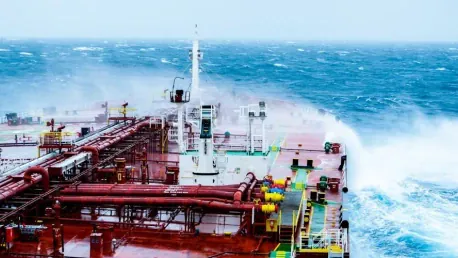As the maritime industry continues to make strides toward sustainability and reducing its environmental footprint, compliance with the most recent regulations has become crucial. On January 1, 2023, new rules came into effect requiring ships to maintain adherence to the Energy Efficiency Existing Ship Index (EEXI) and Energy Efficiency Design Index (EEDI). These regulations mandate that any substantial modifications or conversions to a ship must undergo scrutiny and recalculations to ensure they still meet the required energy efficiency standards. This necessity highlights the importance for ship owners and operators to comprehend and navigate the complex waters of compliance.
Defining Major Conversion and Its Impact
The term “major conversion,” as outlined under MARPOL Annex VI (Regulation 5.4), involves significant alterations to a ship that can greatly influence its energy efficiency. Major conversion is defined in Regulation 2.2.17 and includes changes such as substantial modifications to hull dimensions, increases in engine power by 5% or more, alterations in the ship type according to MARPOL categories, conversions intended to extend the vessel’s lifespan, and other notable adjustments affecting energy efficiency. Keeping track of whether a change qualifies as a major conversion can sometimes be ambiguous. In such cases, the flag administration has the authority to make the final determination.
For extensive major conversions, the situation can become even more complex. If a ship undergoes a conversion that is so substantial that it is considered new construction, it must meet the updated EEDI standards set by the flag administration. This could potentially mean that a vessel previously adhering to EEXI requirements may now need to comply with the more stringent EEDI standards. Ships already subject to EEDI might face even stricter regulations as part of this adjustment. These shifting standards and the need for recalculations underscore the importance of understanding the regulatory framework and staying informed about the implications of major conversions on a vessel’s compliance status.
Recalculations and Compliance
When a conversion is classified as major, recalculations of the EEXI and, if applicable, EEDI must be undertaken, necessitating the submission of new Technical Files for approval. Project planning should incorporate actions to meet these requirements, such as the installation or adjustment of power limitations. Furthermore, an approved Onboard Management Manual for Shaft Power Limitation (SHaPoLi) or Engine Power Limitation (EPL) may be required to ensure compliance.
After undergoing alterations, a survey must be conducted to confirm that the ship complies with the new EEXI and, if relevant, the recalculated EEDI metrics. This survey also serves to verify any measures implemented, like power limitations, due to the new calculations. Upon successful completion of the survey, a new International Energy Efficiency Certificate (IEEC) will be issued. Annual statutory surveys will be essential to verify the validity of the IEEC, ensuring no major conversions or changes have occurred that affect the EEXI or EEDI. This rigorous process highlights the ongoing commitment required from ship owners and operators to maintain compliance.
Minor Conversions and SEEMP/CII Calculations
Conversions that impact energy efficiency but do not meet the criteria of a major conversion still play a significant role in compliance procedures. While these alterations do not necessitate re-approval of EEXI/EEDI Technical Files or the issuance of a new IEEC, it is advisable to have Technical Files re-approved and a new IEEC issued. This is particularly important if there are installations of SHaPoLi or EPL systems that have been modified. The goal is to reflect improved energy efficiency indices accurately, thereby maintaining compliance and enhancing the vessel’s performance.
Alterations might also impact other critical aspects like the Ship Energy Efficiency Management Plan (SEEMP) Phase III and the Carbon Intensity Indicator (CII) calculations. These changes can affect essential parameters, including the ship type, deadweight, and gross tonnage. It is crucial to notify the Data Collection System (DCS) verifier to update and verify the CII accurately. Ensuring the CII reflects the vessel’s current status is vital for maintaining compliance and meeting the industry’s sustainability goals.
Emphasizing Early Assessment
As the maritime industry progresses towards sustainability and reducing its environmental impact, staying compliant with recent regulations has become essential. Since January 1, 2023, new mandates require ships to adhere to the Energy Efficiency Existing Ship Index (EEXI) and Energy Efficiency Design Index (EEDI). These regulations ensure that any thorough modifications or changes to a ship must undergo detailed scrutiny and recalculations to guarantee they still align with set energy efficiency standards. This underscores the importance for ship owners and operators to grasp and navigate the intricate landscape of compliance.
Compliance with EEXI and EEDI means that ships must achieve certain energy performance metrics to reduce greenhouse gas emissions and promote cleaner maritime operations. The regulations impact not only new ships but also existing vessels, creating a pressing need for ongoing assessments and adjustments to operations and design. For ship owners and operators, this translates into a necessity for increased vigilance and proactive measures to meet these stringent requirements. Understanding and navigating these complexities is now a crucial part of maritime operations.









